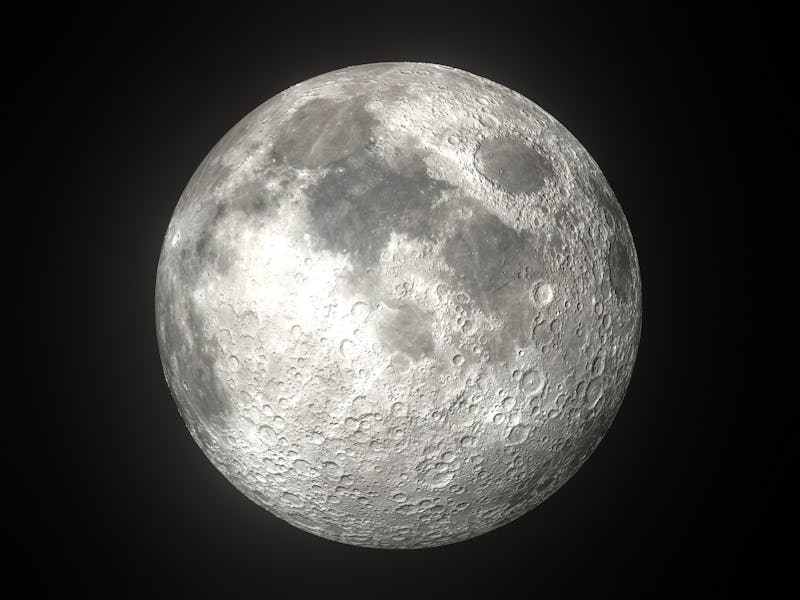Blue Moon: You need to see one of 2021's rarest Full Moon events this week
They come around only once in a... well, you know.

Like the Blood Moon and the Pink Moon, the Blue Moon is a bit of a misnomer. When a Blue Moon occurs, the Full Moon doesn’t actually change color. But it is still a rare sight that’s worth stepping outside and looking up at the heavens for a moment this weekend.
Also called the Green Corn Moon, the Grain Moon, and the Sturgeon Moon, August’s Full Moon adds to an already astronomically packed month. Already, the astonishing Perseids meteor shower has lit up the sky, and both Saturn and Jupiter are at their brightest.
To round it out, the Blue Moon is one heck of an encore. Here is the date, time, and how to see this sight — and some insight into all those nicknames for this celestial event.
What is a Blue Moon?
A Blue Moon is the name given to when there is an extra Full Moon within a certain time period.
A calendrical Blue Moon is when there is a second Full Moon within a calendar month. The Moon’s cycle around the Earth takes about 29.5 days to complete, so if there’s a Full Moon on the first of a month, there will be a second Full Moon towards the end of that month (except for February, of course).
A seasonal Blue Moon is an extra Full Moon within an astronomical season. The four astronomical seasons are marked by the Fall Equinox, the Winter Solstice, the Spring Equinox, and the Summer Solstice. Each season typically features three Full Moons. However, if a season does have four Full Moons, then the third full moon — not the extra fourth — in that season is also dubbed a Blue Moon.
A seasonal Blue Moon occurs about once every 2.7 years. August’s Blue Moon is of the seasonal variety, making it a truly rare occurrence.
August Blue Moon: Date and time
August’s Blue Moon will be at its peak fullness on Sunday, August 22 at 8:02 a.m. Eastern.
Early morning is not generally a great Moon viewing time, but lunar fans can rest assured: the Blue Moon will appear in the night sky at its most glorious on Saturday and Sunday nights, August 21 through August 22.
This moon is also known as the Sturgeon Moon, the Grain Moon, and the Green Corn Moon.
This is the only Full Moon in August 2021.
How to see the Blue Moon
The milky orb will be hanging in the sky as usual — just step outside once darkness falls and you will spot it. The best viewing occurs after it’s completely dark — currently at about 9 p.m. Eastern. The Moon will appear full both on Saturday, August 21, and Sunday, August 22. So you have double the opportunity to see it.
The Moon is completely visible to the naked eye — so long as your night sky isn’t entirely obscured by clouds. Making your way to a remote or high point can also help improve the view by minimizing light pollution and obstruction by buildings or trees.
A telescope or binoculars can also help you see the intricacies of its pocked face, such as the craters and gray lava floes.
This blue moon will appear full the night of Saturday, August 21 and the night of Sunday, August 22.
August Blue Moon: Nicknames explained
The August Full Moon has several names — these include the Green Corn Moon, the Grain Moon, and the Sturgeon Moon, according to the Farmers’ Almanac, which attributes these nicknames to Native American sources.
The Green Corn Moon and Grain Moon nicknames refer to the fact that late summer heralds the coming of the harvest season when it’s time to begin gathering food for winter.
The Sturgeon Moon references the fact that the large sturgeon fish of the Great Lakes and other major lakes are apparently more easy to catch during this time of the year because that’s when the species is more abundant than usual. Indeed, early summer is spawning season for lake sturgeon, bringing them upstream to mate and lay eggs. According to the Farmers’ Almanac, Algonquin fishing tribes would converge at the great lakes and other major bodies of water to fish sturgeon around this time.
Catch the next Full Moon in 2021 using our calendar guide.
This article was originally published on